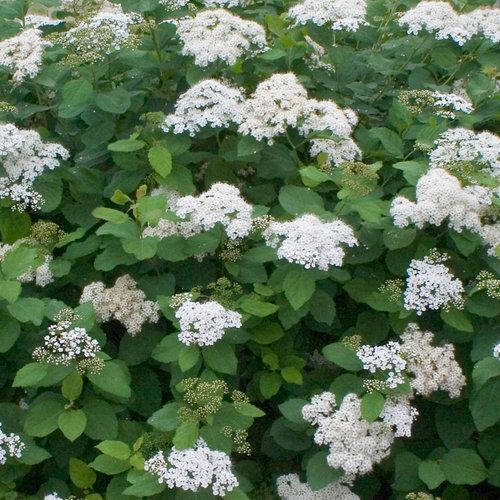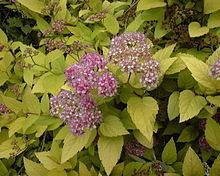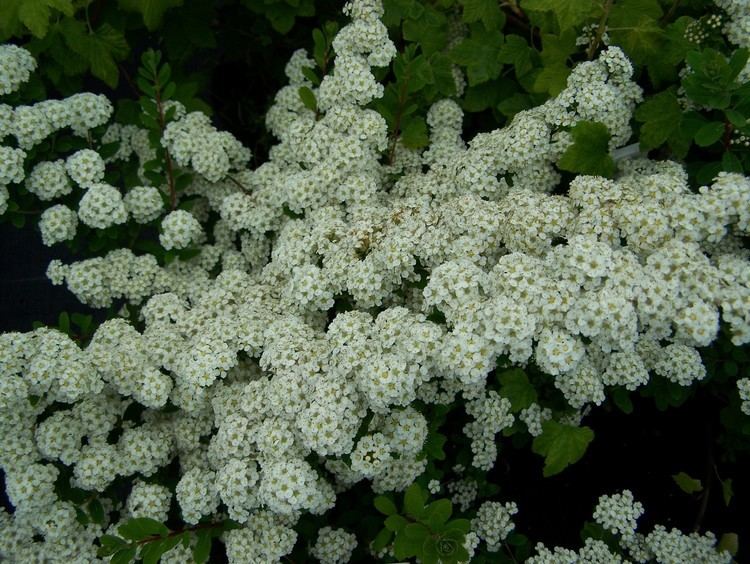Higher classification Amygdaloideae | Scientific name Spiraea Rank Genus | |
Lower classifications Spiraea japonica, Sorbaria grandiflora, Spiraea thunbergii, Spiraea douglasii, Spiraea prunifolia | ||
Spiraea japonica little princess little princess japanese spirea summer flowering shrub
Spiraea /spaɪˈriːə/, is a genus of about 80 to 100 species of shrubs in the family Rosaceae. They are native to the temperate Northern Hemisphere, with the greatest diversity in eastern Asia.
Contents
- Spiraea japonica little princess little princess japanese spirea summer flowering shrub
- Description
- Ecology
- Horticulture
- Traditional medicine
- Other
- Formerly placed here
- Hybrids
- References

The genus formerly included the herbaceous species now segregated into the genera Filipendula and Aruncus; recent genetic evidence has shown that Filipendula is only distantly related to Spiraea, belonging in the subfamily Rosoideae.

Description

Spiraea plants are hardy, deciduous-leaved shrubs. The leaves are simple and usually short stalked, and are arranged in a spiralling, alternate fashion. In most species, the leaves are lanceolate (narrowly oval) and about 1 to 4 inches (2.5 to 10.2 cm) long. The leaf margins are usually toothed, occasionally cut or lobed, and rarely smooth. Stipules are absent.
The many small flowers of Spiraea shrubs are clustered together in inflorescences, usually in dense panicles, umbrella-like corymbs, or grape-like clusters. The radial symmetry of each flower is five-fold, with the flowers usually bisexual, rarely unisexual. The flowers have five sepals and five white, pink, or reddish petals that are usually longer than the sepals. Each flower has many (15 to 60) stamens. The fruit is an aggregate of follicles.
Ecology
Spiraea species are used as food plants by the larvae of many Lepidoptera species, including the Brown-tail, the Small Emperor Moth, the Grey Dagger, the Setaceous Hebrew character, and the moth Hypercompe indecisa.
Horticulture
Many species of Spiraea are used as ornamental plants in temperate climates, particularly for their showy clusters of dense flowers. Some species bloom in the spring, others in midsummer.
The following species, hybrids and cultivars are among those found in cultivation:
Traditional medicine
Spiraea contain salicylates. Acetylsalicylic acid was first isolated from Filipendula ulmaria, a species at the time classified in the genus Spiraea. The word "aspirin" was coined by adding a- (for acetylation) to spirin, from the German Spirsäure, a reference to Spiraea.
Native American groups had various medicinal uses for local Spiraea species. S. betulifolia was used for abdominal pain and made into a tea. The Blackfoot used S. splendens root in an enema and to treat venereal conditions.
Other
Native Americans found S. douglasii useful for making brooms and hanging seafood to cook.
Formerly placed here
Hybrids
There are also numerous named hybrids, some occurring naturally in the wild, others bred in gardens, including several important ornamental plants:
